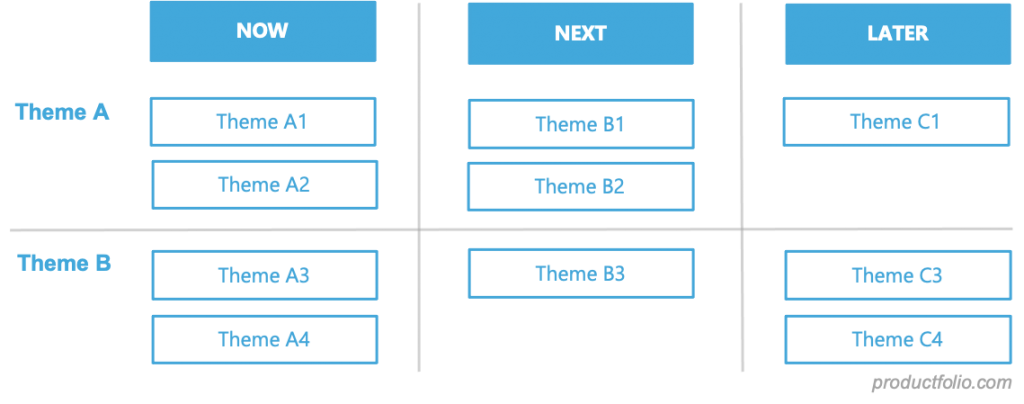What is a Featureless Roadmap?
A feature-less roadmap is a departure from traditional roadmaps in that it places less emphasis on features and more on outcomes (outcome vs output). The idea may sound like a strange one but many teams find that it helps to shift the culture of their teams, toward quality rather than quantity.

Why You May Want to Consider It
The traditional product roadmap is essentially a list of features framed by a timeline. It gives an idea of the order in which the team should build features. By placing less emphasis on features in your roadmap, you can avoid becoming a feature factory. This can help you to think more about solving problems rather than just pushing out unnecessary new features.
A feature-less roadmap helps you to focus more on moving the right metrics and doing the needed discovery work to really understand the problem, rather than committing to features before the work is done. It has its own challenges in that management often wants to have a clear understanding of what to expect and when in order to know things are on track, but if you can build a culture of trust that focuses instead on outcomes and determining success by focusing on the metrics, this can free the team to do proper discovery work before defining a feature solution, which can lead to better outcomes.
Examples of Feature-less Roadmaps
These roadmaps begin from a strategy – the overall company strategy – that you convert into themes. They commit more to delivering outcomes rather than features.
You can adopt a variety of approaches to draw attention away from features to strategy. Two of the most popular examples are:
- Theme-based roadmaps – Features can help you to achieve your objectives. Theme-based roadmaps draw attention to the larger goals and objectives instead. Several features can come under a theme to help achieve it. Themes highlight the problems and why they needed solving while also reducing the tendency for frequent frictions.
- North Star roadmaps – These roadmaps revolve around what is called a “North Star” metric. The team sets its sight on a particular strategic goal, against which every roadmap item or activity is assessed. North Star roadmaps consider both the customer value you’re trying to create and the business impact executives care about. They help to easily decide what activity to include or drop for an effective development process.
When to Use a Feature-less Roadmap
You can consider this product roadmap type when you need one to perfectly present your strategic plan. It helps the product manager to convey the strategy for the proper alignment of team members.
This document better addresses the “Why” question. Why are you building a product and why will customers find it useful?
Feature-less roadmaps can also help when you’re looking to ensure agility and high flexibility. What’s the point of committing to features that might take months or even years when things can change suddenly? Going feature-less helps to ensure that you can quickly adjust to the changing landscape and realities.